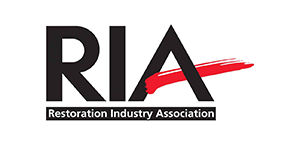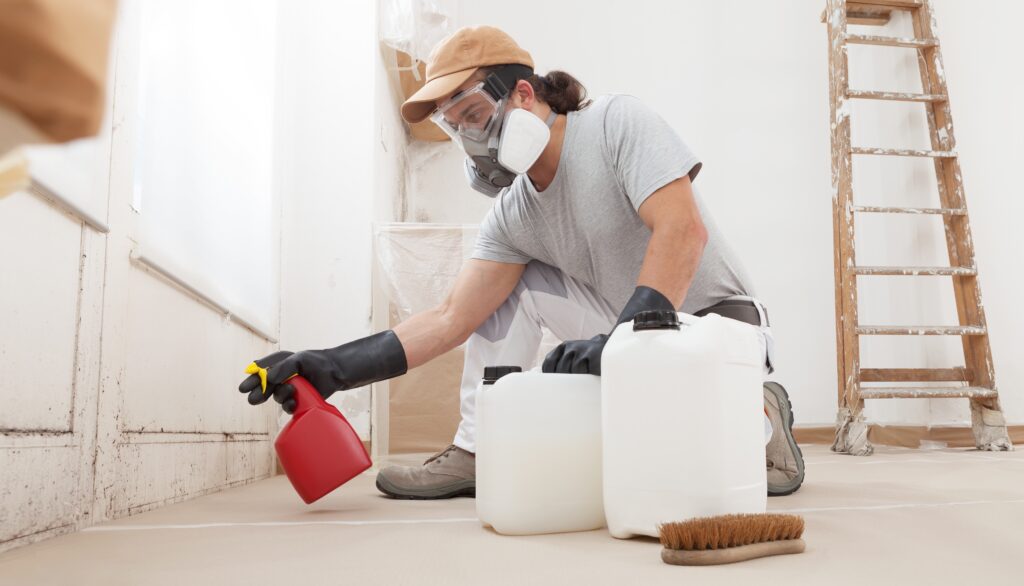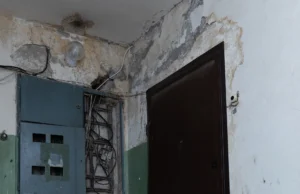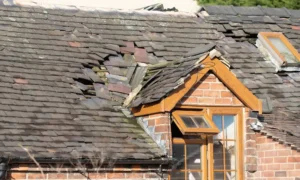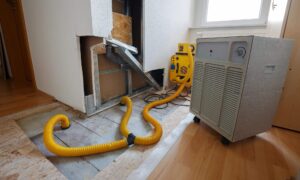Mold growth is a common problem in many Seattle homes. It often comes from water leaks, high humidity, or bad ventilation. When mold grows in walls, it can be hard to spot. This can lead to health risks if you’re exposed for too long.
Mold shows there’s a bigger issue, like too much moisture. It needs water and something to eat, like drywall or wood, to grow. It also needs the right conditions to thrive.
It’s important to know if you can get rid of mold. Getting rid of it means more than just cleaning it up. You also need to fix the reasons it grew in the first place.
Key Takeaways
- Mold growth in homes is often a sign of underlying moisture issues.
- Health risks are associated with mold exposure, making prompt action necessary.
- Addressing mold involves both removal and prevention of future growth.
- Common sources of mold include water leaks and high humidity.
- Effective mold remediation requires identifying and fixing the source of moisture.
Understanding Mold in Walls
Knowing why and how to spot mold in walls is key for Seattle homeowners. Mold can look different, making it hard to tell if you have it.
Common Causes of Mold Growth: Mold often grows due to water issues. This includes water at the foundation, flooding, roof leaks, pipe leaks, and poor air flow. These conditions help mold grow well.
- Water damage from leaks or flooding
- Poor ventilation, like in humid places like bathrooms and basements
- High humidity levels
- Leaks in roofs or walls
- Poorly maintained plumbing
Spotting mold early is important to stop it from spreading. Look for signs like peeling wallpaper, dark grout, and musty smells. Be on the lookout, more so after water damage or in humid times.
Importance of Addressing Underlying Causes: Just removing mold isn’t enough. You must find and fix the moisture source to stop mold from coming back.
By knowing why and how to spot mold, Seattle homeowners can prevent it. This keeps their homes healthier and safer.
Can Mold in Walls Go Away In My Seattle Home?
Mold in walls can be a big problem. It can grow fast, often in just 24 to 48 hours. This happens when the right conditions are met.
Mold can continue to grow and spread if not addressed. Even if some mold dies out, it’s often needed to actively remove it. This helps prevent it from coming back.
Health Risks Associated with Mold Exposure
Mold exposure can harm your health. It can cause allergic reactions, breathing problems, and more. Knowing these risks shows why removing mold is so important.
- Allergic reactions to mold can range from mild to severe.
- Respiratory problems, such as asthma, can be exacerbated by mold exposure.
- In severe cases, mold exposure can lead to more serious health issues.
To get rid of mold, using mold removal techniques is key. It’s important to find and fix the moisture problem that’s causing the mold.
Health Risks and Prevention
Mold in walls can cause serious health problems. It’s important to know the risks and how to prevent them. Mold can lead to skin rashes, breathing issues, and allergic reactions.
Health Risks of Mold Exposure in WA
Mold exposure can lead to several health issues. Some common problems include:
- Skin rashes and irritation
- Respiratory problems, such as coughing and wheezing
- Allergic reactions, including sneezing and runny nose
Preventing Mold Growth in Washington
To prevent mold, you need to fix moisture issues and ensure good air flow. Here are some steps to help:
- Fix any water leaks or condensation issues promptly
- Improve ventilation in areas prone to moisture, such as bathrooms and kitchens
- Use a dehumidifier in humid environments
By following these steps, Seattle homeowners can lower the risk of mold and health problems. Keeping your home dry and well-ventilated is key to preventing mold.
Effective Methods for Removing Mold from Walls
To remove mold from walls, you need to find and fix the moisture source. Using the right mold-killing products is also key. It’s important to tackle the root cause of the mold problem.
Identifying and Addressing the Source of Moisture is the first step. Look for water damage or leaks on the wall. Fix these to stop more moisture from building up.
DIY Mold Removal Techniques
For small mold problems, you can try DIY methods. Here are a few:
- Use a bleach and water mix to kill mold
- Apply mold-killing products made for this purpose
- Make sure there’s good air flow to stop spores from spreading
Precautions During DIY Mold Removal are very important. Wear gloves, masks, and eye protection to avoid mold spores.
DIY methods work well for small mold spots. But, big or serious mold problems need a pro. Experts have the tools and know-how to safely remove mold and stop it from coming back.
In summary, getting rid of mold on walls means finding and fixing moisture sources. Use the right products and decide if you can do it yourself or if you need a professional.
Conclusion
Mold in walls is a serious issue that needs quick attention to avoid health risks. Knowing why mold grows in homes is key to solving the problem.
Homeowners can protect their health and property by preventing mold growth and using effective removal methods. Whether mold in walls can go away depends on the actions taken to fix the problem.
It’s important for homeowners to watch for and solve moisture problems that lead to mold. Using good removal techniques and prevention can lower health risks. This makes homes safer and healthier for everyone.
Recover with Assurance — Northwest Restoration
Whether it’s water, fire, mold, or storm damage, Northwest Restoration delivers fast, professional cleanup and restoration services you can trust. Available 24/7—contact us today!




